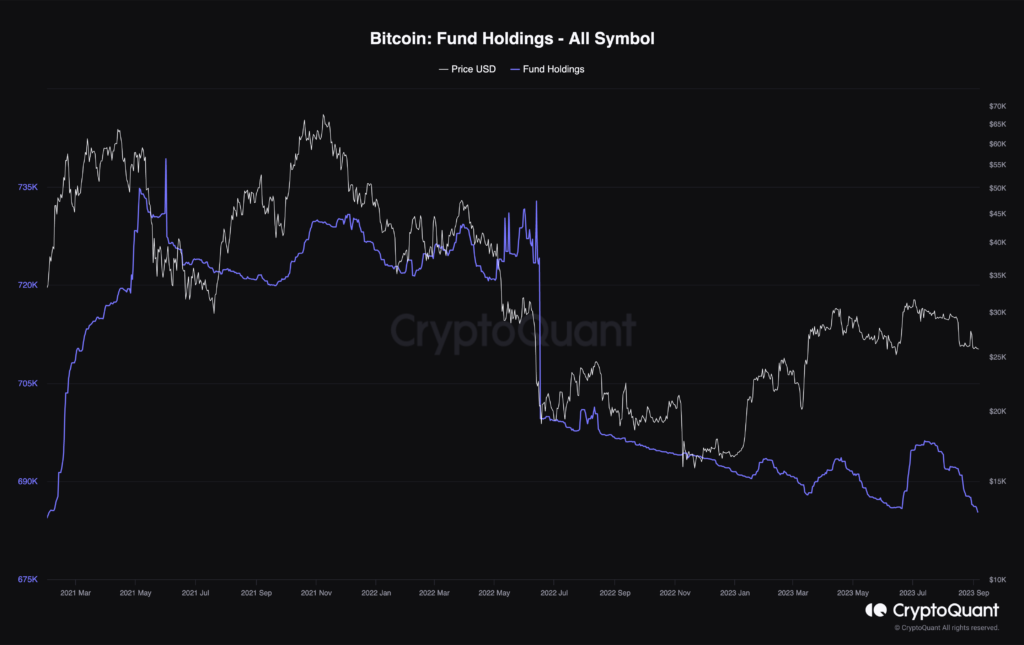- Current data indicates that the amount of Bitcoin (BTC) held by ETFs, funds, and trusts is at its lowest since February 2021.
- Data obtained by COINOTAG shows that as of September 5th, there is a total of 685,271 BTC (approximately $17.54 billion) held by funds, ETFs, and trusts.
- Recent times have seen Bitcoin fund assets hitting these low values, which last occurred in 2021. However, before 2021, there weren’t as many funds, ETFs, and trusts as there are now.
The decreasing presence of Bitcoin in these funds is reaching its lowest levels in 2 years; will this event lead to a drop in Bitcoin’s price?
Number of Bitcoins Held in Funds Continues to Decline

The latter half of 2023 has been marked by increasing discussions and positive expectations regarding spot Bitcoin ETFs. However, current data indicates that the amount of Bitcoin (BTC) held by ETFs, funds, and trusts is at its lowest since February 2021.
Specifically, the “Bitcoin Funds Assets” metric created by CryptoQuant appears to be loosely correlated with the BTC price but is beginning to reach a breaking point. It’s a breaking point where funds are selling their Bitcoins, and the price remains stable.
Data obtained by COINOTAG shows that as of September 5th, there is a total of 685,271 BTC (approximately $17.54 billion) held by funds, ETFs, and trusts. This metric peaked at 740,000 BTC in May 2021 and experienced a significant drop during a bear market in June 2022.
Since then, the amount of Bitcoin fund assets has steadily declined, despite a recovery in BTC prices in June 2023, creating a significant disparity between these two metrics, which have had a high correlation over the past two years.
What does this disparity mean?
This disparity can imply one of two things: either the Bitcoin price will drop to match the amount held by funds, or these assets will start a new accumulation phase, allowing them to catch up with BTC’s positive price performance.
Interestingly, these low values in Bitcoin Fund Assets have occurred recently, just as they did in 2021. However, before 2021, there weren’t as many funds, ETFs, and trusts – the year was largely marked by high institutional acceptance of BTC. Institutional acceptance was one of the key drivers behind the demand that fueled the 2021 bull market for the leading cryptocurrency.
With increasing supply in circulation, Bitcoin needs to continuously find more demand to reevaluate its past price performances.

